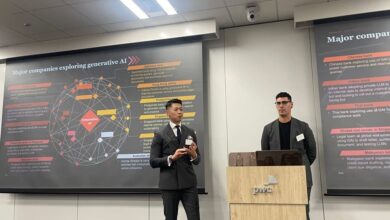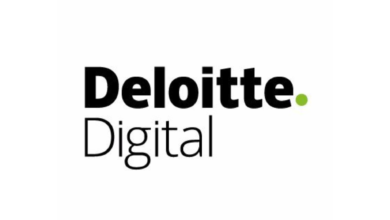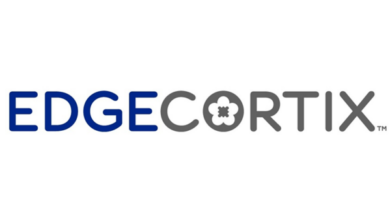AI’s Real Impact on Marketing

The Gist
- AI boosts productivity. Generative AI empowers marketers to enhance efficiency rather than replace human effort, focusing on productivity tools.
- Enhance audience targeting. Generative AI allows for deep data exploration and personalized marketing, revolutionizing how audiences are targeted.
- Balance AI and human touch. Despite AI advancements, maintaining human interaction in customer service remains crucial for satisfaction.
It may not come as any surprise that marketing and advertising boast the highest rate of generative AI adoption in the workplace at 37% (share of respondents), according to a survey by Statista.
However, what may come as a surprise is that the top categories of AI tools are not aimed at marketing, copywriting, chat or generative art — but instead productivity. (Kaggle)
What does this mean for marketing? It means that generative AI, and AI more broadly, at the end of the day, is about empowering marketers and advertisers to be more productive in their work — instead of doing the lion’s share of marketing work for them.
The below generative AI marketing use cases of the near future are ones that marketers and even advertisers should consider — and do so with data privacy, governance and consumer trust in mind. After all, human-aided generative AI marketing is the best way to protect both brands and consumers from any missteps.
So, what are some generative AI marketing use cases of the near future?
Generative AI Marketing Use Cases of the Near Future
Let’s explore a few:
1. Data Exploration
Generative AI provides marketers access to data for effortless data exploration and advanced segmentation. Bid farewell to complex query languages, code writing and instead use natural language processing (NLP) and understanding (NLU) provided by embedded martech generative AI assistants.
Simply ask a question in plain, natural language about your data, and it will return insights. Generative AI marketing can even effortlessly build audiences for both marketers and advertisers — even incorporating synthetic data where data deficiencies exist. By segmenting their customer base and analyzing diverse data sources (think zero-, first-, second- and third-party data) the marketer gets highly targeted and personalized marketing audiences.
Related Article: Generative AI in Marketing: Boost or Bust for Your Department?
2. Personalized Marketing Campaigns
Marketers can use generative AI to access data to identify patterns and preferences from customer behavior variables contained in the above audiences and combine this with reinforcement learning to create hyperpersonalized marketing campaigns — tailoring content, offers and recommendations to substages of a larger customer journey — at the individual customer level.
Related Article: Beyond Hype: Practical Applications and Limits of Generative AI in Marketing
3. Multi-Modal Dynamic Pricing Optimization
Generative AI can analyze publicly available information about market conditions, competitor pricing and customer behavior — and combine it with other analytical data streams — to optimize dynamic pricing strategies. This will help brands across a variety of industries (travel, retail, hospitality, banking, insurance, etc.) adjust prices in real-time to maximize revenue and stay competitive.
4. Chatbots and Virtual Assistants
Powered by a combination of generative AI and other AI techniques, chatbots and virtual assistants can engage customers, answer queries, provide product recommendations and assist in the sales process.
But buyer beware — recent studies are finding that people prefer human interaction and are frustrated with generative AI powered virtual assistants. A poll from Ipsos found that 77% of U.S. consumers think that customer service chatbots are frustrating, and 88% would rather speak to a person.
Related Article: Journey Through Time: How Chatbots Have Evolved Over the Decades
5. Customer Journey Mapping
The path to purchase is not straightforward. Think of the combination of channels, devices and points in time that a customer can interact with your brand — the possibilities are endless! Generative AI marketing can help brands make these interactions seamless by analyzing protected customer interaction data across all touchpoints to create both inbound and outbound customer journey maps that identify pain points and optimize the user experience.
Related Article: The Old Customer Journey & the Impact of AI
6. Creative Testing, Targeting and Optimization
Generative AI marketing can improve targeting by helping marketers and advertisers identify the most relevant audience segments for their products or services. This increases the efficiency of campaigns while reducing spend. Additionally, generative AI can streamline the A/B testing process by analyzing results and suggesting optimal variations. This helps marketers quickly identify high-performing content, designs, or strategies, leading to more effective campaigns.
Related Article: Generative AI in Marketing: Smoothing Creative Operations
7. Market Research, Trend Analysis and Search Engine Optimization
Generative AI provides access to processes and analyzes vast amounts of data to identify market trends, consumer sentiments and emerging opportunities. Marketers can use this information to stay ahead of the competition — whether that’s new competitive campaigns to market, new digital properties that have been keyword optimized based on trends, or a pivot in market strategy.
Final Thoughts
It’s safe to say that generative AI is advancing at a faster pace than most everyone imagined. And while it seems that there are no limits to the use of generative AI for marketing and advertising purposes, it is important to use these emerging technologies in a responsible manner.
There’s no doubt that generative AI marketing can enhance our creativity and efficiency as marketers throughout the entire customer engagement lifecycle and is only restricted by the limits of our imagination!
Learn how you can join our contributor community.



